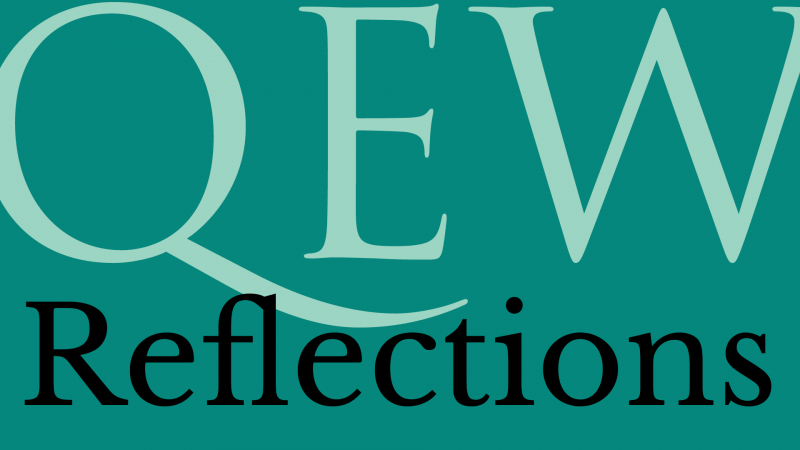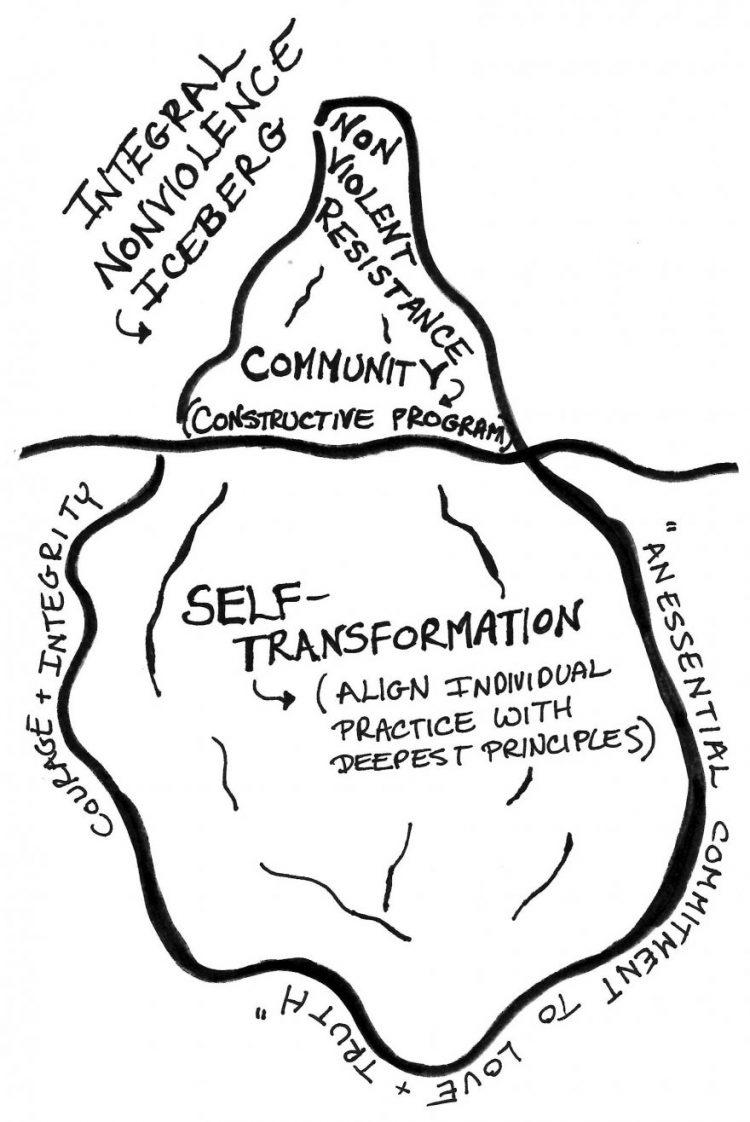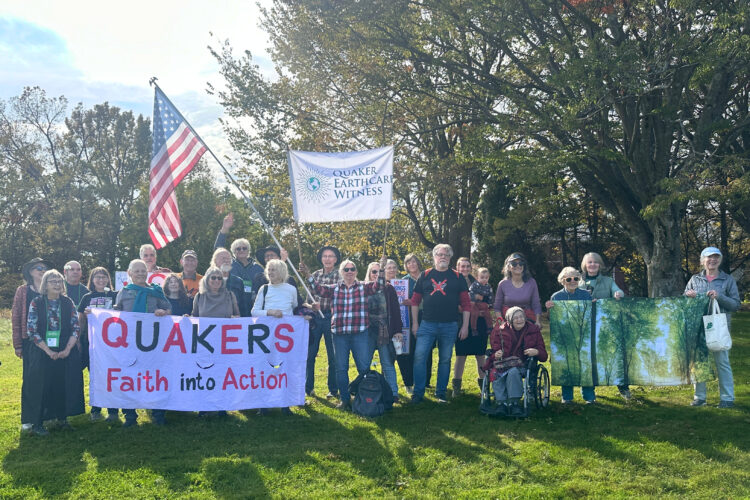Advice for These Times

By Shelley Tanenbaum.
TWO OF MY RECENT READS have made a strong impression on me as I ponder how I as an individual and how Quaker Earthcare Witness as an organization can best use our resources in these times. Van Jones succinctly sums up the two opposing world views we seem to be facing: “Is it ‘We are all in this together’ or ‘Each individual is on their own to get what they can’?”
Quaker author and activist George Lakey wrote Viking Economics to tell the story of how the Nordic countries shifted from capitalism and extreme polarization in their countries during the 1930’s to the social democracy and connection that exists today. George readily admits that the Nordics are still arguing and complaining, but their issues tend to be about how to tweak their social structures; they have fully embraced a culture of inclusion where education through the university level is free, health care is provided for all, the elderly are cared for, family leave to care for children is standard, and the countries compete to see which one is ‘greener.’

We have much to learn from their struggle to make this dramatic shift. George acknowledges that there is a significant difference between the United States of today and the Nordic cultures of the 1930’s, but also enough similarities that we can borrow many of their tactics if we are to ever accomplish this shift. One of the critically important tactics that the Nordics used and the left-progressive movements in Germany and Italy failed to use during the same time period was a strict adherence to non-violence. As Quakers, we have a spiritual calling to commit to non-violence. In addition, George asserts that non-violence is more likely to succeed as a tactic than any other alternative. People in the middle of the political spectrum are prone to look for an authoritarian leader to keep the ‘peace’ if there is constant vandalism and street fighting.
Even before reading Viking Economics, my visit to Standing Rock Reservation in North Dakota last fall led me to seek a greater understanding of non-violent movements. What I learned dovetailed nicely with George’s emphasis on the importance of non-violence in creating social change. The Gandhian Iceberg, written by Chris Moore-Backman, is a clear and passionate description of the three components needed to build a non-violent movement. Many non-violent theoreticians talk about three interacting parts of a non-violent movement, often using venn diagrams. Chris’ brilliance is to envision the three parts as one large iceberg.
Chris explains that non-violent practitioners first ground their behavior and their actions in prayer and guidance from spirit–this is the largest part of the iceberg and it sits below the waterline. At Standing Rock, each of the camps was a prayer camp–there was a prayer circle at a sacred fire twice a day, with rituals that call on spirit for guidance; and spirit is called on to guide every major action.
In the second component of non-violence, practitioners surround themselves in a community of like-minded people, all supporting each other materially and emotionally, and that is building a better world–Gandhi called this the “constructive program,” and Chris sees this as the part of the iceberg that is above the waterline. At Standing Rock, the main camp, Oceti Sakowin, included actively supporting an eco-village with a commitment to non-violence, and a strictly enforced ban on alcohol and drugs.
When practitioners are called to action, the call comes from a deep place of prayer and spirit (below the waterline), is supported by the entire community (above the waterline) and is pictured as the pointy tip of the iceberg, the third component.
At Standing Rock, direct action was structured as a time of prayer, a gathering as a community, and a spirit-led commitment as water protectors put themselves directly in the path of the pipeline or in other provocative situations.
Are you energized by the outpouring of public engagement we are seeing? We may all wish that we didn’t need to do this, but we always NEEDED to do this. The difference is that now we all know how much it is needed. Thanks to George and Chris for giving us some of the tools that we need at this time. Democracy has to be participatory.
See you in the streets, see you at school board and city council meetings, see you on the frontlines, and see you building community. See you marching on April 29 for climate action!

